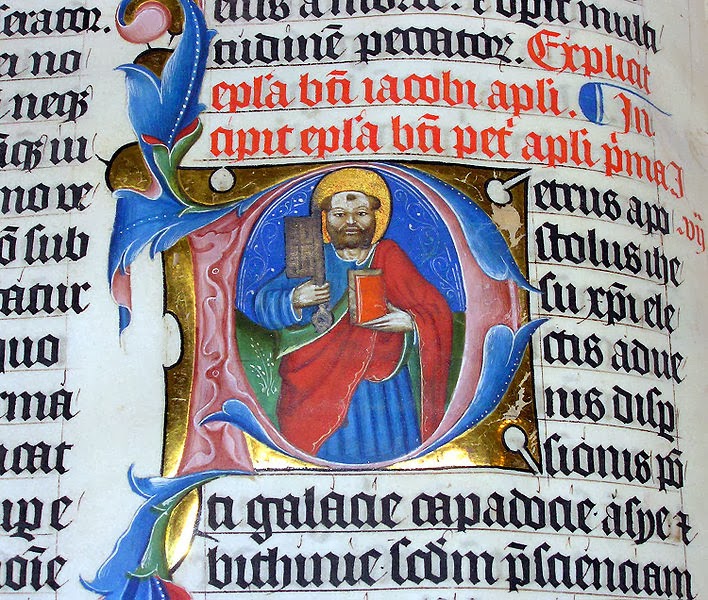Does it matter what language is used to worship God? Shouldn’t the congregation understand what is being said at Mass? Isn’t Latin outdated and no longer have a place in our modern world? Even in the midst of such questions the Catholic Church unequivocally states that the “Latin language is to be preserved in the Latin rites” (Sacrosanctum Concilium, 36). This displays that while the modern world may defend the vernacular in worship, the Church has her reasons why a dead language is to be safeguarded.
[featured-image single_newwindow=”false”]
I believe that the revival of Latin is not only what the Church desires, it also adds to the sacred character of the celebration of the liturgy and fosters a greater sense of prayer. Worshipping in an ancient language should not be a hindrance to authentic prayer, but instead open our hearts to a profound sense of the presence of God.
To start off, there is a common philosophy regarding worship in today’s world: it must be intelligible. All a person has to do is interview a handful of parishioners at a local parish to discover the frustration that occurs when a priest says a few prayers in Latin during Mass. The main argument over and over again is, “We don’t know what he is saying,” or “We don’t know what the choir is singing,” or “I don’t know Latin.” We tend to have an innate belief that the words said or sung at Mass must be immediately intelligible.
Interestingly enough, this idea is rather new in the Church and developed around the time of the Reformation. The Protestant reformers believed that “divine worship [was] essentially a proclamation of the Word of God [and] made them conclude that using a language that was not intelligible to the assembly was contrary to the Gospel” (The Voice of the Church at Prayer: Reflections on Liturgy and Language, 155). From this point of view, it makes sense why the vernacular would be chosen over a foreign language like Latin.
So then what is the Mass? A simple proclamation of the Gospel? Is the church simply a “lecture hall,” where we go to sit and listen?
While it is true that part of the Mass is meant to be instructive and intelligible, the overall character of the liturgy is meant to be much more. Instead, what is meant to be the focus is that, in the “liturgy, heaven joins earth, the invisible becomes visible, and the symbolic is the real (sign and reality)” (Mystical Body, Mystical Voice: Encountering Christ in the Words of the Mass, 27). This hidden reality should then be expressed in the language that is used at Mass, for “the language that we use during the liturgy is the Mystical Voice of the Mystical Body, a ‘hymn of praise that is sung through all the ages in the heavenly places’” (Ibid, 29).
Rather than being a mere proclamation of scripture, the liturgy is meant to bring others into a mysterious realm where one can peer through a window into Heaven. The use of the Latin language accomplishes this mystical goal of the liturgy just like the iconostasis veils the Divine Mysteries in the Eastern Church. Parish priest, Father Christopher Smith, explains what many have discovered in this way, “In the West, the function of icons and veils is taken in part by [the Latin] language. It emphasizes the mystery and the transcendence of a God who, despite His closeness to us, is still always beyond our reach” (New Liturgical Movement).
We don’t have to understand or know any Latin to benefit from its use. Actually, it may even beneficial if we don’t know any Latin. For most of Salvation History the worship of God was veiled and few if any people ever saw what was going on in the liturgy. This was the case in the Jewish Temple and remained the case for centuries in the Catholic Church. Even today the use of an iconostasis is still an essential part of the Divine Liturgy. It frustrates our desire to know what is going on and places a barrier to our curiosity.
It reminds us that we can not fully grasp God here on earth. He is a mystery and mysteries are not always meant to be fully understood. Mysteries create in us a sense of humility, but also a sense of awe and wonder. The Latin language is very beautiful if we allow it to penetrate our modern hearts. We need to stop looking at the liturgy as a lecture and start appreciating its mystical character.
Latin reminds us that the liturgy is a meeting of Heaven and earth and that there is much more to this world than meets the eye. We have to take off our scientific glasses for a while and simply appreciate the mystery that unfolds before us.
To draw an analogy, there are two approaches to star-gazing. We can either step outside our door, look up at the sky and say, “Look at all of those luminous spheres of plasma,” or we can appreciate their beauty and proclaim, “How wonderful and beautiful are the stars!” We don’t necessarily need to know what the stars are and how far they are from earth to appreciate them. We can simply gaze at them and stand in awe of God’s creation.
Latin is a great gift and once we begin to understand that and appreciate its ability to veil the mysteries of God, our hearts will be open to a much more profound way of prayer.
Click here for the next article in this series: How Should Latin be Restored to the Liturgy?

